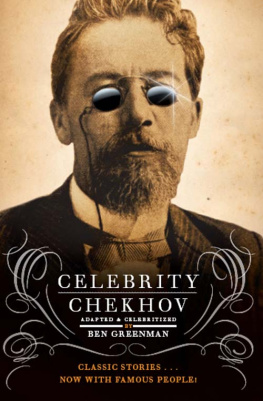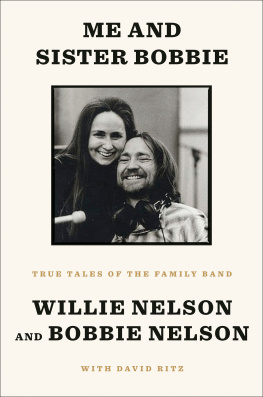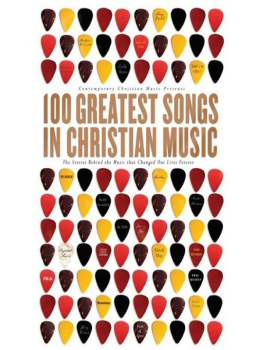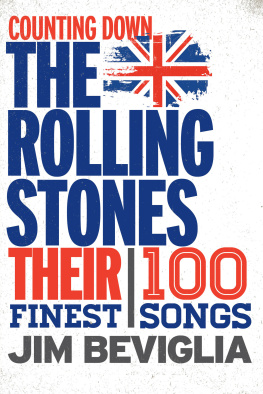
ALSO BY BEN GREENMAN
Fiction
Superbad
Superworse
A Circle Is a Balloon and Compass Both
Correspondences
Please Step Back
What Hes Poised to Do
Celebrity Chekhov
The Slippage
Nonfiction
Mo Meta Blues: The World According to Questlove (with Ahmir Questlove Thompson)
Brothas Be, Yo Like George, Aint That Funkin Kind of Hard on You?: A Memoir (with George Clinton)
I Am Brian Wilson (with Brian Wilson)

Text copyright 2016 by Ben Greenman
All rights reserved.
No part of this work may be reproduced, or stored in a retrieval system, or transmitted in any form or by any means, electronic, mechanical, photocopying, recording, or otherwise, without express written permission of the publisher.
Published by Little A, New York
www.apub.com
Amazon, the Amazon logo, and Little A are trademarks of Amazon.com, Inc., or its affiliates.
ISBN-13: 9781503934986 (hardcover)
ISBN-10: 1503934985 (hardcover)
ISBN-13: 9781503934979 (paperback)
ISBN-10: 1503934977 (paperback)
Cover design by Faceout Studio
To Gail, who loves music as much as I do, and who I love as much as I love music.
CONTENTS


INTRODUCTION
Why Songs Mean Everything
If You Let Them
SPARROW
Marvin Gaye Here, My Dear
Tamla Motown: 1978
ONCE, IN AN old short story I wrote, a bird sang within earshot of a female character. The female character is waking up and thinking about what she wants to do with her day, and the singing bird gives her ideas. It is a small bird, and the song it sings is small, too, though the consequences of its singing are enormous. The bird flew through a gap in the wire, minding its own business, singingit was actually singing a happy little song about the springand she plugged it at two hundred yards. The way I see it, the bird and the woman are in a relationship, and this is the breakup scene. Bye-bye, birdie.
When I finished the story, I sent it off to the publisher for comments. I received one comment, which was that birds didnt sing when they flew. He had enough certainty to send me to the encyclopedia, where I quickly discovered that he was wrong. Many birds, including skylarks and pipits, sing while theyre flying. In attempting to differentiate between the British chimney swallow and the American barn swallow, John James Audubon wrote in Birds of America that both sing on the wing and when alighted, and the common tweet which they utter when flying off is precisely the same in both. They sing on the wing. Thats a song in itself.
You may already know that this is a book about popular singerswhich isnt to say pop singersand the songs into which they poured their thoughts and feelings. I have listened to songs for almost as long as I have existed. I remember childrens songs from when I was a child and then, soon after that, other songs. I havent kept track of how many songs I have heard, but I do know that hundreds if not thousands have touched me at my core. I played them over and over again until I learned all the words, until I knew when the drums came in, until I could name them when they came on the radio from just a few notes.
Songs started to mean everything to me. They contained so much wisdom about relationships, and I had none. For that matter, they contained relationships, and I had none. Whenever I heard songslove songs from soul singers, bad-luck songs from pop singers, family songs from country singersI took note of the way that the singer (had I been more sophisticated, I would have said the narrator, or the singers character) interacted with friends or lovers. And then, as my own relationships began to develop, I looked back into the songs for points of contact. Whether with platonic friends or with romances, when I encountered moments I didnt quite understandobstructions in the lineI turned to songs for help. The two things I thought the most about converged prophetically, if not profitably. The essays in this book, most of them very short, try to explore (and reward) the connection between pop songs and the labile emotional state of young adulthood. They follow a straightforward method. A certain number of songs are listed up top, and then enlisted to explore a topic. Maybe its silence. Maybe its honesty. Maybe its doubt. The songs speak to the topic at hand, and also to each other.
These days, I am an old married man. I have a child in his teens and another one soon to be there, too. But I was not always old, and was not married, and when I was the other kind of manyoung and singleI learned by trial and error. Are there other ways to learn? If so, someone should have said something. My companions in that trial and error were songs, for the most part. The songs in these essays gradually led me into a more sedate old age. I thank them for that and also, sometimes, damn them for that. In the end, aging has been neither my fault nor my achievement. I wrote these pieces as I went, and they let me recover and recall those moments of discovery. The experiences described in these essays were fresh at the time of writing. The thoughts about them havent generally had time to mature, which means that they havent had time to ossify.
Many of these songs are love songs, because those are the songs that touch upon the rawest nerves. The wildest and wisest exploration of relationships I have ever heard is Marvin Gayes Here, My Dear , which he released in 1978. He was on the brink of divorcing his first wife, Anna Gordy Gaye, who was the sister of Motown founder Berry Gordy. Anna was considerably older than Marvin. He was also well into a relationship with the woman who would become his second wife, Janis Hunter. (She was, like Anna, part of music royalty; her father was the brilliantly idiosyncratic jazz guitarist and singer Slim Gaillard.) As a result of various complicated alimony issues, the divorce was dragging. Gayes lawyer convinced him to give up half of the royalties from his next album to Anna. The album that resulted from that odd arrangement was Here, My Dear , which not only funded the divorce, it dissected it.
Nearly every song on the album deals forthrightly with the questions that lurk inside every romantic relationshipand, in a different way, inside every relationship of any kind. There are songs about devotion, about loyalty, about trust, about distrust, about protection, about possessiveness, and about loneliness.
One of the minor songs from Here, My Dear is arguably its most beautiful: Sparrow. In the song, Marvin explains that he used to hear a sparrow singing, but that one day as [he] went along [he] didnt hear his song. This silence doesnt sit well with him, and what starts as a polite request to the sparrow to resume singing becomes a down-on-my-knees-please entreaty. Sing before you go, he sings. Sing to me, Marvin Gaye, before you fly away. Hes asking for a song.
Sing, little sparrow
About the troubles youre in
Places youve been
You can sing, I know it
Life is filled with confusion as well as places of comfort that give us safe haven from that confusion. Songs are one site of comfort, and the site that this collection maps. Its an investigation of ethical questions, friendship and relationship problems, anger, lust, guilt, and (sometimes) pleasure, but always with a soundtrack. Sparrow ends with a semi-attached bit of poetry, delivered by layered, lighter-than-air vocals: I remember a bird.















